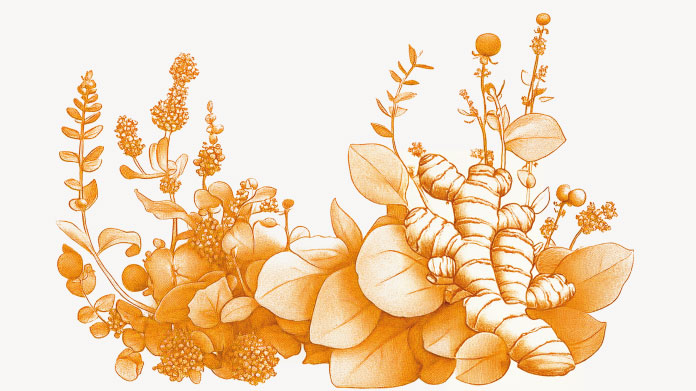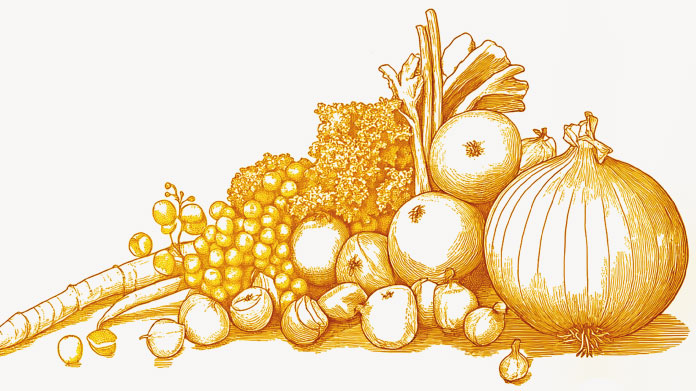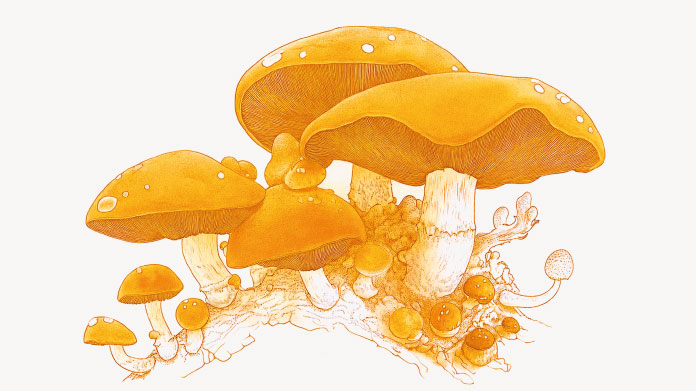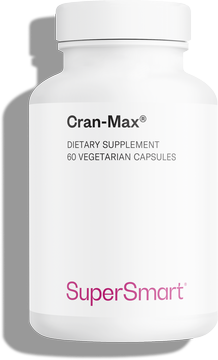Top 10 foods high in vitamin C
It’s the king of the vitamins: vitamin C, also known as ascorbic acid. Here we explore 10 of the best vitamin C-rich foods and how to make the most of their benefits.
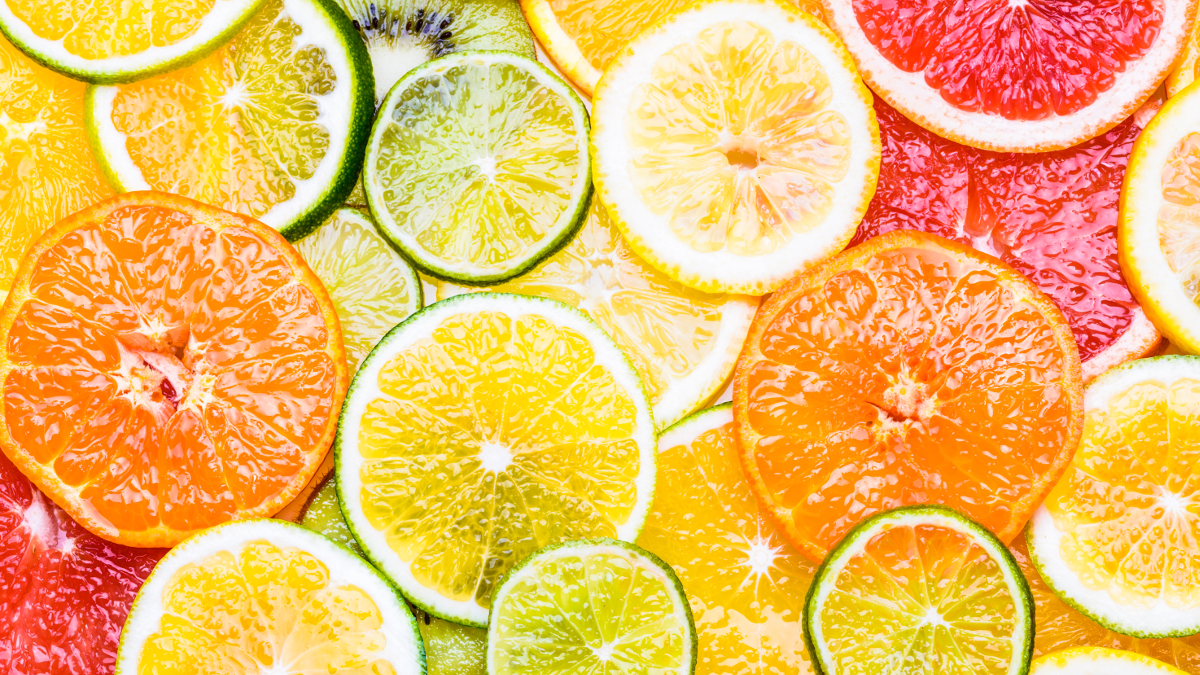
Brief recap of vitamin C’s benefits
As we know, vitamin C supports numerous physiological functions. It plays a role in maintaining the immune and nervous systems, in forming collagen and in helping to combat fatigue, etc. (1-2) Let’s now take a look at which foods contain the highest levels.
Guava
Guava is a sweet-tasting exotic fruit which contains high levels of vitamin C: 228mg per 100g. Its close relatives, papaya, mango and star fruit, also contain vitamin C amongst other nutritional benefits.
Peppers
With a content of 184mg per 100g, yellow peppers are chock-full of vitamin C. Whatever their colour, peppers are an excellent vitamin C source: if well-digested, they’re best eaten raw, as ascorbic acid is quickly destroyed by heat .
Chilis
Part of the same family as peppers, chilis are similarly rich in vitamin C! They are likewise best eaten raw. Choose hot or mild chilis depending on your taste.
Parsley
Parsley offers a substantial amount of vitamin C: 177mg per 100g. A good reason to add freshly-chopped raw parsley to your salads and cooked dishes. Thyme, dill, and all aromatic herbs offer the same nutritional advantage so make good use of bouquets garnis in your cooking.
Blackcurrants
This little black berry packs a massive vitamin C punch, with 180mg per 100g. Not too sweet, blackcurrants are excellent for our health. They can be combined with other red fruits (strawberries, cherries) to make a delicious summer dessert or a vitamin-packed smoothie.
Horseradish
Horseradish is part of the brassica family which includes cabbage and the mustard plant. Used for spicing up dishes, it should be grated just before serving in order to retain its vitamin C content. The fiery wasabi, familiar to fans of Japanese cuisine, is part of the same plant family and has similar characteristics.
Kale
Like its ‘cousins’, red cabbage, broccoli and green cabbage, kale is an excellent source of vitamin C. If you like its bitter taste, you can eat it raw, chopped into a salad, for example. If not, try eating it steamed, as this method of cooking will minimise any loss of vitamins and minerals.
Oranges
Oranges are well-known as a source of vitamin C, and with good cause! In fact, all citrus fruits contain this vitamin. Eat oranges or grapefruit raw or juiced, and lemons too (use the pulp or the zest – the whole fruit offers benefits). Quick vitamin tip: sprinkle lemon juice on salads and guacamole, or add it to your daily bottle of water.
Seaweed
Seaweed of various kinds is increasingly used in Western cuisine. It offers excellent nutritional benefits along with a salty flavor that will enhance your cooking. Nori, the black seaweed used to wrap maki (sushi rolls), dulse and kelp are the best choices for vitamin C.
Breakfast cereals
Breakfast cereals are often fortified with vitamins and minerals to provide the energy you need for the day ahead. Beware, however, of added sugar and salt in muesli. Instead, choose cereals with honey or fruit, for example.
Vitamin C supplements
Supplementation is an easy way of increasing your intake of vitamin C: try, for example the vitamin C supplements Asc2P, Triple C or Ester C™. While all forms of ascorbic acid are beneficial, the liposomal form is especially well-absorbed by the body and offers a particularly valuable helping hand (Liposomal Vitamin C).
So there you have it: there are many options available for ensuring you get enough vitamin C each day. First and foremost, eat a varied diet with plenty of fruit and vegetables, raw or steamed, and be sure to take a regular high-quality supplement!
References
- https://efsa.onlinelibrary.wiley.com/doi/abs/10.2903/j.efsa.2010.1815
- Vitamine C : aperçu et mise à jour. Schlueter, Amanda & Johnston, Carol. (2011) Revue des pratiques de santé complémentaires. 16. 49-57.
- Table de composition nutritionnelle des aliments, ANSES.
Keywords
1 Days
Great customer service - responsive …
I ordered from them and my item was unavailable for sometime. I was super happy when they reactivated my order and shipped my item which arrived very quickly. Great customer service.
Ruth Rueter
2 Days
Super fast shipping
Super fast shipping
Donald Borling
5 Days
Reputable companysearch and the number of…
The research and the number of selection of products.
NAKHJAVAN Shervin
18 Days
The Anti Aromatase is a great product
The Anti Aromatase is a great product. You just need to have constant inventory. Recently this product has been out of stock.
GEORGE Verne
20 Days
Great help on chat
Great help on chat. Knowledgeable and friendly.
Jason Argos
23 Days
Customer service was fast and friendly.
Customer service helped to stop the transaction process of the subscription. I appreciated that.
Greenie
24 Days
I order here due to the high quality of…
I order here due to the high quality of the products and the quick delivery of items - thank you
Barbara J
25 Days
SuperSmart's Eye Pressure supplements: highly recommended!
I purchase SuperSmart's Eye Pressure supplements regularly for over 5 years, and gotta say they are truly a wonderful product for my Glaucoma. Highly recommended if you have eye pain from your Glaucoma.
D. Martinez
30 Days
Quick service
Quick service
MONELL
30 Days
Speedy service.
Speedy service.
ROSENTHAL Marvin
34 Days
Clear website- Efficient
Clear website. Excellent search engine and fast delivery!
Mohamad Hussein
37 Days
They have great products.
They have great products.
Vickie
37 Days
Great Shipping Time!
You Have A Great Shipping Time! Praise The Lord!
DMHoge
39 Days
Doctor Recommended!
Good pricing, very good availability, doctor recommended (couldn't find what I needed anywhere else), and it took only a week to arrive (which I can't complain about).
Al
39 Days
Great product and fast shipping
Great product and fast shipping
Marie

